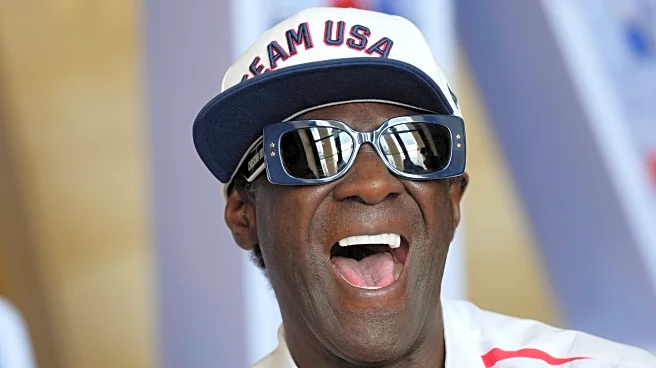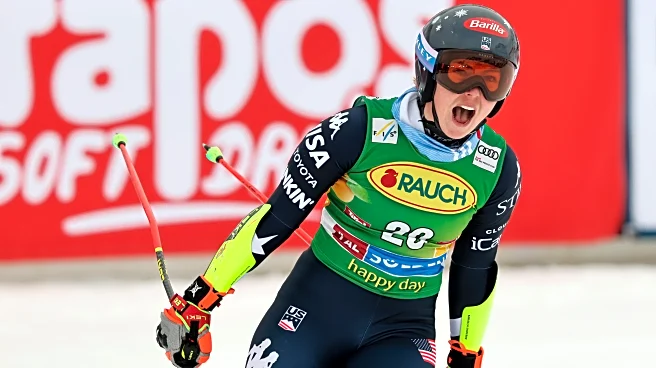What's Happening?
American skier Paula Moltzan achieved a career-best result in giant slalom at the Alpine skiing World Cup season opener, raising questions about timing peak performance for the upcoming 2026 Milan-Cortina Olympics. Moltzan, along with other skiers, is strategizing
to ensure optimal form for the Olympics, balancing the demands of the World Cup season. Coaches are closely monitoring athletes' recovery and peaking cycles to align their performance with Olympic goals. The World Cup season is crucial for skiers, but Olympic medals are a rare opportunity, occurring only once every four years.
Why It's Important?
The strategic planning by skiers like Paula Moltzan and Mikaela Shiffrin highlights the importance of timing in sports performance, especially with the Olympics approaching. Successful planning can lead to Olympic glory, impacting athletes' careers and national pride. The approach varies among skiers, with some focusing on maintaining high performance throughout the season, while others aim to peak specifically for the Olympics. This planning is crucial for athletes and their coaches, as it can determine their success on the world stage and influence future sponsorships and endorsements.
What's Next?
As the 2026 Milan-Cortina Olympics approach, skiers will continue to refine their strategies to ensure peak performance. Coaches will play a vital role in monitoring athletes' progress and adjusting training plans. The upcoming World Cup races will serve as a testing ground for these strategies, providing insights into athletes' readiness for the Olympics. The results of these races will influence final preparations and adjustments, as skiers aim to balance their World Cup commitments with Olympic aspirations.
Beyond the Headlines
The strategic planning for peak performance at the Olympics reflects broader themes in sports, such as the balance between short-term achievements and long-term goals. It underscores the importance of data-driven decision-making in sports training and the role of technology in monitoring athletes' performance. This approach may lead to innovations in training methodologies and sports science, benefiting athletes across various disciplines.















